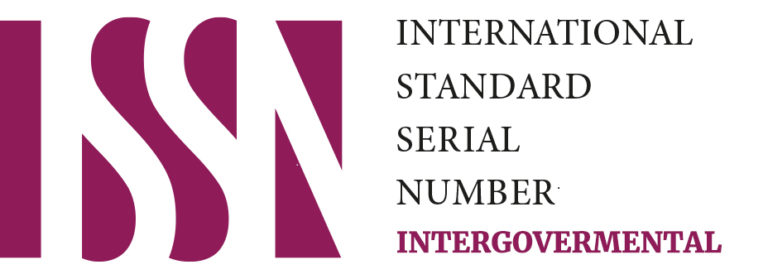ABSTRACT
Impact studies show that quality products and services and their application can significantly impact economic and social spheres. These impacts may be at the microeconomic, macroeconomic, sectoral, or corporate level, or the State budget level, fostering technological innovations, promoting consumer protection, or improving the income situation of small and medium-sized enterprises (SMEs) established enterprises and producers. At the same time, the studies demonstrate that neglecting quality-related aspects leads to a lack of knowledge of critical production and economic parameters, often resulting in losses for the business, the State, or consumers (a fact that is clearly illustrated by the case studies examined). Thus, this paper examines the factors affecting the institutional and structural development of a national quality infrastructure and standardization in Nigeria and the possible implication of an NQI in the country.
INTRODUCTION
Economically, infrastructure is viewed as the resultant development from the supply of basic facilities necessary for living, trade, and business.[i]Infrastructural development in this context is the efficient supply of facilities that are necessary for human development. Some common infrastructures often associated with a directed change in human development are education, health care systems, telecommunications, electricity, transport, energy, and all other social infrastructures.
The effect of quality infrastructure is vital in improving the population’s quality of life as infrastructural development is an inclusive development indicator. According to Ramírez, infrastructure provides access to the market and essential services needed by the population.[ii] This development also affects economic growth by creating employment opportunities and consequently improving income and social development.[iii] For example, a “well-constructed road can facilitate the supply of perishable food to high-value urban markets,” and revenue generated can be invested in health and education to improve human capital productivity. This suggests that there exists a positive relationship between the level of economic growth and infrastructural development.[iv] According to Achour et al.,[v] the level of economic growth can also stimulate urbanization, which is also a significant contributing factor to infrastructural development. In essence, as urbanization takes place, the need to provide necessary and supportive infrastructure to the inhabitants arises.
However, in many African societies, inadequate and low-quality infrastructure significantly impacts welfare and poverty persistence. The development of the economics of production, trade, and business climate development has long been ignored, and investment in health, education, and water supplies has been mostly insufficient.[vi] As a result, citizens have limited access to health centers, good governance, and about half of the population lacks basic amenities.[vii] Limited business opportunities and poor health have perpetuated poverty in the country, and poor infrastructure has reduced production output profitability in the local and international markets.
Some of the suspected loopholes identified in Nigeria are a frail National Quality Infrastructure Programme, which has caused a lack of competitiveness of Nigerian goods and services locally and globally,a weak legal framework, and policy inconsistencies, barriers-to-trade (BT), and corruption. However, the focus of this paper study is to show how a weak NQI can—besides these other vulnerabilities—affect economic growth stagnation, cause a lowering of standards of goods and services, which inadvertently bringing about a poor balance of trade and payment with an attendant increase in poverty as opposed to a robust and organized NQI which is a critical driving influence for better market entrance and resilience, and non-barriers-to-trade (NBTs).[viii]
MEASURING THE IMPACT OF NATIONAL QUALITY INFRASTRUCTURE (NQI) ON QUALITY DEVELOPMENT
Measuring the impacts of national quality infrastructure (NQI) poses challenges to researchers due to the kinds and multitude of roles that this institutional complex has within societies.[ix] The difficulty of identifying and measuring the impacts of NQI reduces the capacity to demonstrate the importance of the activities of NQI to policymakers and society, and to improve the policy design to achieve development or innovation goals, NQI can be essential. There is often a discussion about the difference between the direct and indirect impacts of NQI, assessing and justifying its impacts more difficult. In order to address this issue, NQI impacts should be distinguished according to direct and infrastructural impacts. As the direct impacts have been widely theorized and are also easier to understand, this section will focus on the infrastructural impacts of NQI.
The characteristics of the impacts of NQI are similar to those of roads or electrical-grids. Their primary role is to facilitate economic and social activities by firms, citizens, or policymakers often referred to as third parties. This means that to understand and capture their main impacts, one must consider the direct consequence of third parties’ activities due to their access to NQI services. Within this methodological reflection, infrastructural impacts must be conceptualized, and the possible categorizations of these kinds of impacts must be indicated. Acknowledging that this theory has to be further discussed and developed shall contribute to the design of impact studies and policies that shall open a new perspective on understanding and demonstrating the importance of NQI.[x]
The impact is the result of activity by this third party, which could either not be carried out without the infrastructural intervention or whose efficacy would be significantly reduced without it. The contribution of the infrastructural intervention does not vary as a proportion of the direct impact. Instead, it is always equal to the direct impact that the third parties carried out. For example, a road, the typical facility considered an infrastructure, may serve, in year 1, for 10 thousand trips by trucks to carry goods. In year 2, 20 thousand and in year three they may be 5 thousand. The number of trips per year varies due to changes in socio-economic factors beyond whether the road had intrinsically changed. For the infrastructural impacts, it only matters that in the three years periods, there were a total of trips of 35 thousand allowing the exchange of goods worth of a particular estimated value, being these the infrastructural impact of the road. It could have been more or less in each year, and in the future, it can also vary, but the infrastructure is not accountable for those changes.
An infrastructure, however, is not always positive only because it compensates the costs. On the contrary, in cases where financial, human, and physical resources are scarce, the most successful infrastructure is the one that facilitates the highest direct impacts by third parties (i.e., infrastructural impacts), and the best policy design is the one that allows the most infrastructural impacts with the same resources reflecting its accurate interpretation of the needs of society. Thus, to understand the infrastructure’s roles, one has to look to the extent of its use to its users.
NQI PROBLEM IN NIGERIA
Creating and implementing a technical regulation on consumers’ protection, public health, and environmental protection poses several challenges. If the measurement capabilities required to sanction the cases where this is violated are not available, it will not be possible to enforce the regulation. Secondly, if measurement instruments are not accurate enough, a citizen or an enterprise complying with a technical regulation risks being sanctioned unfairly due to wrong measurements. However, to considering the traceability of measurements and the problem of effective implementation of the NQI in Nigeria, the researcher utilized a research design—a survey research approach of data collection—in which information is gathered through secondary data on a case study or oral or written interviews structured more formal or a combination of the approach. For this study’s purpose, the researcher will also conduct an empirical investigation that involves semi-structured interviews with relevant stakeholders to gain an in-depth understanding and insight into the respondents’ experiences to make a justifiable conclusion. Besides, as Mangal and Mangal observed, case studies allow for the use of multiple sources of interactive information.[xi]The questionnaire engaged the respondents on their perception of NQI in the country. First, the respondent was asked if they were acquainted with the concept of NQI, which was immediately followed by a question on the perceived influence of NQI in Nigeria. The study questionnaire revealed that over 76% of the respondents interviewed had heard about NQI and are conversant with the countries that have implemented the framework (Figure 4.6 and figure 4.7).
Figure 4.6: Percentage of respondents who have heard about NQI
Figure 4.7: Percentage of respondents who know the countries implementing NQI
Further, the findings revealed that the respondents believed that creating a regulatory framework as NQI in these countries has impacted their economic growth and development (figure 4.8). This is in line with the empirical examination conducted earlier, which suggested that unless the NQI in both Europe and Africa is capable of providing the required calibration services and other supporting services cost-effectively to the local producers, their might was not a subsequent change that would bring about improved economic growth and development.
Figure 4.8: Perceived Impact of NQI on economic growth and development
Consequently, over 60% of the respondents viewed NQI as an innovative strategy to attain sustainable development in Nigeria (figure 4.9). For example, the development of legal metrology needs to be accompanied by scientific metrology services to the measurement instruments industry or the calibration of the inspectors’ measurement instruments. Without this, inequities in the access to the markets are created or may impede the regulation from being enforced.
Figure 4.9 NQI as a resourceful strategy in attaining sustainable development in Nigeria
This is seen in Brazil’s case, where the implementation of Lei Seca in Brazil created stringent rules on drinking and driving and had significant impacts in terms of accident reduction.[xii] The implementation of this law is considered to be responsible for the reduction by 32% of deaths resulting from driving accidents between March 2009 and December 2011, and Inmetro was central to the calibration of the breath analyzers used to enforce the law, providing trust to the analyzes and protecting them from being taken to court by consumers attempting to avoid sanctions.
Engaging in an international trade system with companies worldwide requires that companies demonstrate their ability to provide the goods that consumers or other stakeholders require and meet their quality targets. In terms of the infrastructural impacts, one has to consider the standards and quality targets that NQI services allowed firms to undertake. Citing the problem with adjusting to technological innovations as an example, respondent 2 stated that for a developing country like Nigeria, Technological appropriation is a process that fosters the industrialization process, consisting of using already existing knowledge and reproducing it in the country. For local companies to appropriate technologies, they often require the same measurement systems where those technologies are utilized. By creating a new primary or secondary calibration service, the proposed NQI can provide traceability or reduce uncertainties to the measurements made by local companies, which shall allow them to reproduce certain technologies.
PROSPECT OF NQI IN NIGERIA
The dilemma between liberal and realist approaches in the international affairs arena is as old as the Peace of Westphalia. For as long as we have had nation-states, the ultimate and perennial core of international relations, there have been debates and discussions on the academic and on the diplomatic fronts as to which of the two main world views is the rightful one when it comes to describing international reality and drafting foreign policy recommendations. And even though this might be a legitimate dilemma it is also a false one.
NQI is a procedure by which an authoritative body gives formal recognition that a body or a person is competent to carry out specific tasks. An organization that issues certificates needs to be reputable; otherwise, its certification documents are without informative value. For that reason, a certification body proves its reliability through an independent confirmation of its competence. The accreditation process ensures that its certification practices are acceptable, that it can test and certify third parties, behaves ethically, and employs reasonable quality assurance. National accreditation bodies operate according to the international standard ISO 17011 to ensure their assessments’ international recognition.[xiii] Mutual recognition agreements between different governmental and regulatory organizations on regional, national, and international levels guarantee that each member of the agreement recognizes other members` accredited bodies as if they had performed the accreditation. This has important implications for the international trade of certified goods because it avoids double testing costs and facilitates international market access. As a tool for economic growth in Nigeria, National Quality Infrastructure can;
Network effects through enhancing interoperability:
Quality infrastructures increase the value of goods with network externalities and promote the development of networks as long as they allow products to work as a part of a larger number of productive systems. By ensuring compatibility between products, their integration in a broader number of value chains is facilitated, increasing the number of economic agents that derive benefits from using them.[xiv] The linkages between firms and industries are multiplied, more information is exchanged, and research cooperation increases.
Better management procedures:
Quality infrastructures aim at improving not only production-related procedures but also management practices so that natural resources are preserved in the production process.[xv] from the questionnaire distributed respondent, a little over 50% of the respondent either disagreed or strongly disagreed with the notion that quality infrastructure depletes natural resources (Figure 4.10). Similarly, Akekere et al. noted that “Quality infrastructures may generate improvements in all aspects of a country: better quality, new schemes of internal organization and service delivery, and also facilitate the creation of new products and services.”[xvi]
Figure 4.10 Relationship between quality and resource management
Competition (Opening Markets):
The development of quality infrastructure may reduce businesses’ dependency on a small number of suppliers, hence opening the markets. By guaranteeing comparability, traceability, conformity, Bhattacharya et al. concluded that a quality system broadens companies’ buying possibilities, increases competition among suppliers, and buyers’ confidence in suppliers’ quality and reliability conforms the norms.[xvii]
Reducing entry barriers:
60% of the expert interviewed noted that trade barriers are often caused by inferior product and service standards (figure 4.11), concurring with the notion that quality infrastructures enhance transparency and help firms reaching new markets through the information contained in standards to appropriate the preferences of consumers in foreign markets and the required technical specifications.[xviii] Furthermore, through certification and accreditation, local firms obtain foreign consumers’ trust more quickly as it guarantees that their products conform to the specified norms.
Figure 4.11 Quality Influence in Trade Barriers
Economic efficiency:
Economies of scale, that is, the cost reduction associated with a larger production scale, can be seen effected and effective through quality infrastructure. One of the instruments available to achieve this is through standardization processes. However, standardization reduces variety because it sets limits to a certain number of characteristics of products. Empirical findings from Expert shows that improving standards can assist in developing the Nigerian economy and improving the countries macroeconomic indicators.
Figure 4.11 Economic Prospect of NQI
Consumers and environmental protection:
Concerns of consumers and environmental protection are increasing, and quality infrastructure is a means to safeguard such interests. For example, if a particular chemical is regarded as harmful for the health of consumers or the environment, metrology instruments can be developed to measure the levels that products contain that chemical; the findings from expert suggest that the NQI through technical regulation (a mandatory standard) can assist in developing service standards in various sectors such as health, legal and manufacturing sector.
Figure 4.12 Consumers and environmental protection
CONCLUSION
Reinforcing the infrastructural nature of NQI promotes the idea that it is meant to serve its users and that it can be strategic for the accomplishment of their own goals, and that, therefore, it is of their interest to know how to use it and demand new uses or directions for it. There may be diverging interests from different players regarding the design of NQI services. Its organizational structure must include identifying and assessing the benefits and losses by various types of users and identifying conflicts of interest that may be present throughout its use. NQI can also play an essential role in the sustainability of economic and ecological systems and promote regional development. For example, for the development of renewable energy technologies, or to help to rationalize the consumption of energy of households; for the creation of incentives for producers to follow certain practices through certification schemes that help different processes that create virtuous economic cycles from those with neutral or negative impacts; by regulating activities that misuse the natural resources, Which may create long-run problems that Will affect the living standards of the populations. NQI is, in this sense, a powerful tool for the challenges faced by today’s society, but its impacts and their measurement must gain visibility.
RECOMMENDATIONS
By analyzing the chain of the impact of the services provided by the quality infrastructure components, it can be seen that the direct utility of the NQI relates to the definition of the technical specifications for a product or service and the verification of compliance or conformity assessment. It may be necessary to develop the range of services offered by the NQI in conjunction with demand. In or der to promote the introduction of “quality criteria” into a productive sector, it should be borne in mind that the corresponding services (standards, testing, calibration, and certification) do not always exist or else do not have the necessary competence and recognition. Thus, the sectoral development strategy must include instruments to promote or strengthen the quality services offered and recognition of them. If quality services are not yet well developed, it is advisable to gradually introduce quality criteria into the various productive sectors so that the development of the NQI is in step with national needs. Besides, in order to be as inclusive as possible and to allow smaller companies to adapt their production systems to the new requirements, it is also necessary that the policies take into account the gradual integration of smaller companies, that is, those businesses and systems with limited resources in terms of finance, human capital, and equipment [capital].
[i] Govinda Timilsina, Gal Hochman, and Ze Song, Infrastructure, Economic Growth, and Poverty: A Review., World Bank Policy Research Working Paper 9528, Papers.Ssrn.Com, 2020, http://www.worldbank.org/prwp.
[ii] São Paulo, Ann-Katrin Petersen Ramírez, and Carl Felix Wolff, Building Quality Infrastructure Services for Water and Sanitation Providers in Latin America-Examples from German Development Cooperation 2., Congress Sanitation and Water Supply-RESAG 14th Congress Meeting of Quality Laboratories-ENQUALAB 14, Resag.Org.Br, n.d., 4, http://www.resag.org.br/congressoresagenqualab2014/anais/trabalhos/buildingqualityinfraestructure.pdf.
[iii] Araby, Quality Infrastructure: The Road towards Nation’s Competitiveness, 31.
[iv] Mounir Belloumi and Houda Achour, “Investigating the Causal Relationship between Transport Infrastructure, Transport Energy Consumption and Economic Growth in Tunisia Handling Parameters in Multi-Round Auction: An Example from Tunisia Irrigation Auction View Project Investigating the Causal Relationship between Transport Infrastructure, Transport Energy Consumption and Economic Growth in Tunisia,” Elsevier (n.d.): 988–998, https://www.researchgate.net/publication/282360346.
[v] Belloumi and Achour, “Investigating the Causal Relationship between Transport Infrastructure, Transport Energy Consumption and Economic Growth in Tunisia Handling Parameters in Multi-Round Auction: An Example from Tunisia Irrigation Auction View Project Investigating the Causal Relationship between Transport Infrastructure, Transport Energy Consumption and Economic Growth in Tunisia.”
[vi] Ashiagbor et al., Banking in Africa: Delivering on Financial Inclusion, Supporting Financial Stability, 201.
[vii] M A Mamabolo, Provision of Quality Roads Infrastructure in South Africa: Rural Villagers’ Perceptions, Polokwane Municipality in Limpopo Province, Journal of Public Administration and Development Alternatives, vol. 1, 2016, 17, https://journals.co.za/content/journal/10520/EJC-9431d6040?crawler=true&mimetype=application/pdf.
[viii] Bernado Calzadilla-Sarmiento and Christophe Marianne, “How Can Quality Infrastructure Help West Africa Overcome NTBs? | International Centre for Trade and Sustainable Development,” last modified December 1, 2014, accessed June 8, 2018, https://ictsd.iisd.org/bridges-news/bridges-africa/news/how-can-quality-infrastructure-help-west-africa-overcome-ntbs.
[ix] Jorge Gonçalves and Jan Peuckert, “Measuring The Impacts Of Quality Infrastructure” (n.d.): 44.
[x] Ibid.
[xi] Mangal and Mangal, Research Methodology in Behavioural Sciences.
[xii] Barbosa et al., “Iris Image Quality Assessment Based on ISO/IEC 29794-6.”
[xiii] Walid Gbadebo Adebosin et al., “The Effect of Infrastructural Investment on Sustainable Development in Nigeria (1980-2016),” Izvestiya, no. 2 (2019): 148–163.
[xiv] Jonah Akekere et al., “Industrial Sector Growth and Public Infrastructure Capital in Nigeria,” Journal of Economics, Management and Trade(2017): 1–12.
[xv] Ibid.
[xvi] Ibid.
[xvii] Antoinette Alas Bhattacharya et al., “Quality of Routine Facility Data for Monitoring Priority Maternal and Newborn Indicators in DHIS2: A Case Study from Gombe State, Nigeria,” PLoS One 14, no. 1 (2019): e0211265.
[xviii] Edet Okon Anwana and Samuel E. Affia, “Economic Growth and Development in Nigeria: Which Institutions Infrastructure Matter,” Journal of Business and Economic Policy 5, no. 1 (2018).
Publisher information: The Intergovernmental Research and Policy Journal (IRPJ) is a unique interdisciplinary peer-reviewed and open access Journal. It operates under the authority of the only global and treaty-based intergovernmental university in the world (EUCLID), with other intergovernmental organizations in mind. Currently, there are more than 17,000 universities globally, but less than 15 are multilateral institutions, EUCLID, as IRPJ’s sponsor, is the only global and multi-disciplinary UN-registered treaty-based institution.
IRPJ authors can be assured that their research will be widely visible on account of the trusted Internet visibility of its “.int” domain which virtually guarantees first page results on matching keywords (.int domains are only assigned by IANA to vetted treaty-based organizations and are recognized as trusted authorities by search engines). In addition to its “.int” domain, IRPJ is published under an approved ISSN for intergovernmental organizations (“international publisher”) status (also used by United Nations, World Bank, European Space Agency, etc.).
IRPJ offers:
- United Nations Treaty reference on your published article (PDF).
- “Efficiency” driven and “author-focused” workflow
- Operates the very novel author-centric metric of “Journal Efficiency Factor”
- Minimal processing fee with the possibility of waiver
- Dedicated editors to work with graduate and doctoral students
- Continuous publication i.e., publication of articles immediately upon acceptance
- The expected time frame from submission to publication is up to 40 calendar days
- Broad thematic categories
- Every published article will receive a DOI from Crossref and is archived by CLOCKSS.






